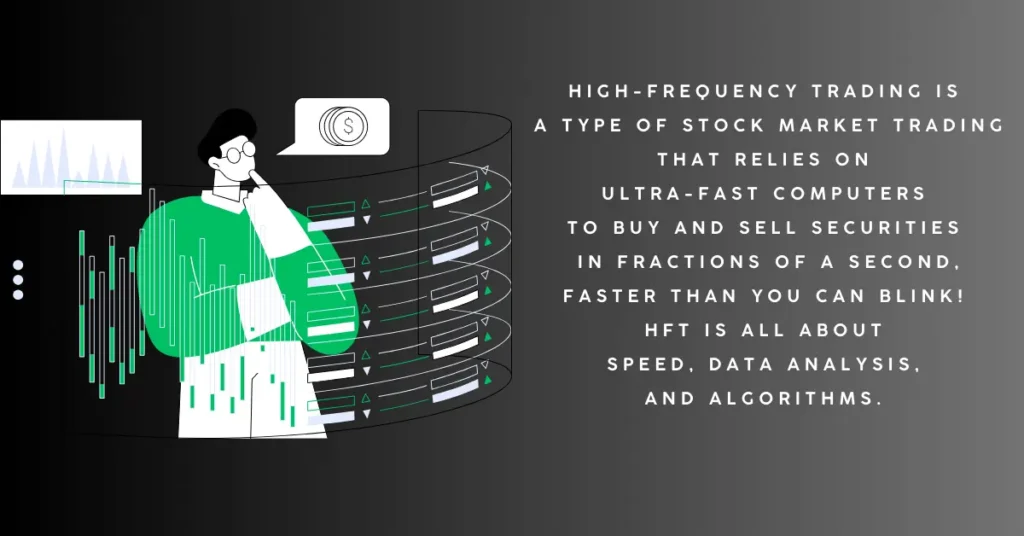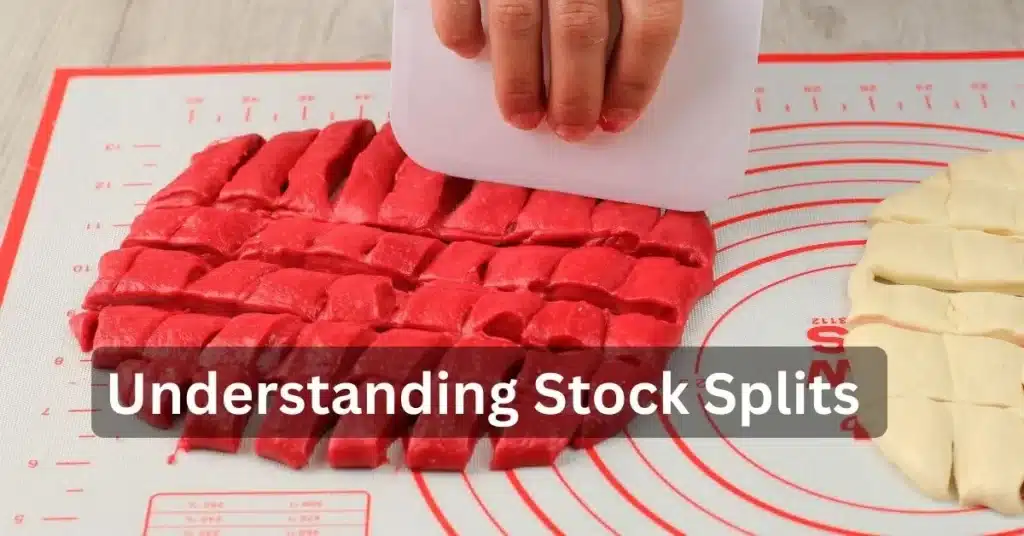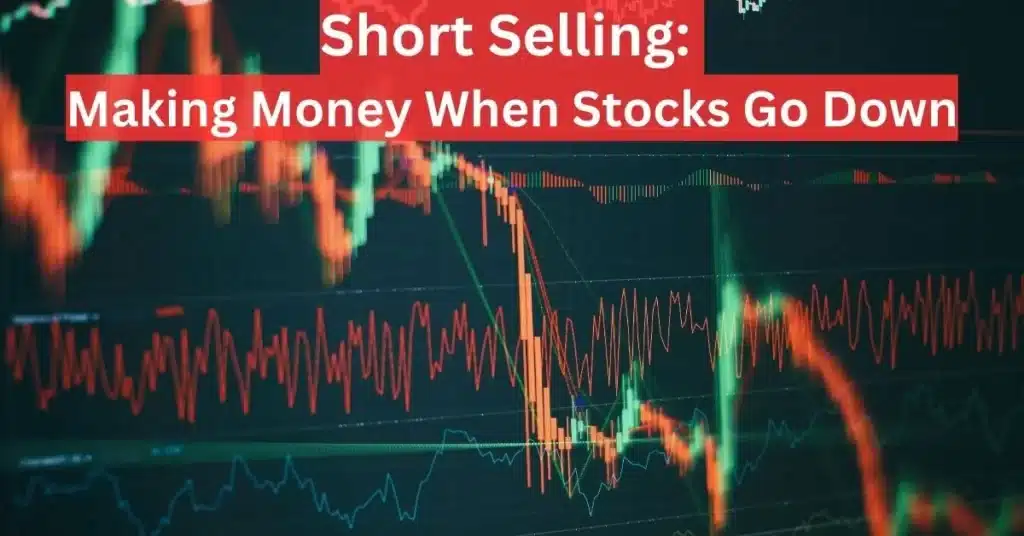High-frequency trading (HFT) might sound like something only financial experts should worry about. Still, it’s a fascinating topic shaping the modern world of investing—and you don’t have to be a Wall Street veteran to get the basics.
This article is designed to explain HFT in simple terms, helping you understand how it works, why it’s so impactful, and what it means for everyday investors.
What is High-Frequency Trading (HFT)?
High-frequency trading is a type of stock market trading that relies on ultra-fast computers to buy and sell securities in fractions of a second—faster than you can blink! HFT is all about speed, data analysis, and algorithms.
Traders use sophisticated computer programs to make rapid trades, capitalizing on minuscule price differences that might only last a millisecond.
Key Characteristics of HFT:
- Speed: Trades happen in microseconds (one-millionth of a second).
- Algorithms: Complex mathematical formulas dictate when to buy or sell.
- Volume: Typically involves thousands of trades per second.
- Technology: Requires high-tech infrastructure and proximity to data centers.
HFT is like a super-fast car in a race. Imagine if you had a car that could zip through every gap in traffic in a split second, making dozens of tiny moves while others only make one—that’s what HFT does in the financial markets.
How Does HFT Work?
High-frequency trading operates using sophisticated algorithms, which are step-by-step instructions for the computer.
These algorithms look for patterns, trends, and opportunities in the market. Here’s a simplified rundown:
- Data Collection: Algorithms gather vast amounts of market data—prices, volumes, trends—constantly scanning for profitable opportunities.
- Decision-Making: Once the computer spots a potentially profitable trade, it decides whether to buy or sell.
- Execution: If a trade looks good, it’s executed in a fraction of a second, often before human traders even notice the opportunity.
- Exiting the Trade: The computer quickly exits the position, often within seconds, once a small profit has been locked in.
HFT firms can make profits from even tiny price movements, thanks to the sheer volume of trades executed.
Why is HFT So Popular?
Ever wonder why traders are willing to invest in the complex infrastructure needed for HFT? The answer is pretty simple: Profit.
Here’s why HFT has become such a big deal:
- Small Profits Add Up: HFT profits come from exploiting tiny discrepancies in stock prices. Each trade might yield just a fraction of a penny, but when you’re making thousands (or even millions) of trades a day, it adds up fast.
- Market Efficiency: HFT can help make markets more efficient by narrowing price differences between exchanges. Think of it like an advanced recycling system—it cleans up price inconsistencies so everything works a bit smoother.
- Liquidity: High-frequency traders often provide liquidity to the market, meaning they make it easier to buy or sell stocks quickly. This can reduce costs for other traders and investors.
A Quick Real-Life Example: Arbitrage Trading
Let’s say you go to a flea market and see a vintage toy for $10. You know that the same toy is being sold online for $20.
If you buy the toy at the market and immediately sell it online, you make a $10 profit—that’s arbitrage in action.
In the financial world, HFT firms do the same thing, but they do it with stocks, bonds, or currencies in milliseconds.
What Tools Do HFT Traders Use?
HFT isn’t something you can do with your average home computer—it requires top-tier equipment and tools.
Here are a few essentials that high-frequency traders rely on:
- Algorithmic Software: Specialized programs for analyzing data and making trades automatically.
- Colocation Services: Placing servers as close as possible to stock exchanges to cut down on latency (the time it takes for information to travel).
- High-Speed Internet: Super-fast connections that allow for split-second trading.
- Data Feeds: Access to live market data from multiple sources, giving a complete picture of market conditions.
The Pros and Cons of HFT
High-frequency trading has its champions and its critics. Let’s take a closer look at both sides.
Pros:
- Market Liquidity: HFT firms often act as middlemen, making it easier for buyers and sellers to find each other.
- Lower Transaction Costs: By improving liquidity, HFT can help lower trading costs for everyone.
- Market Efficiency: HFT helps correct price discrepancies quickly, contributing to more accurate pricing.
Cons:
- Market Manipulation: Some argue that HFT can lead to unfair market practices, like “quote stuffing” (flooding the market with fake orders to confuse competitors).
- Increased Volatility: Because HFT can involve large volumes of trades in a short period, it might contribute to market instability, especially during a financial crisis.
- Accessibility: High entry costs mean HFT is mostly for big players—hedge funds, investment banks—not for your everyday investor.
Is HFT Good or Bad for the Average Investor?
Here’s where things get a bit nuanced. HFT has brought benefits to the market, such as greater liquidity and narrower bid-ask spreads (the difference between the highest price a buyer is willing to pay and the lowest price a seller is willing to accept).
For the average investor, this can mean lower costs when buying and selling stocks. However, there’s a downside—HFT can make the market feel more unpredictable, and some argue it creates an uneven playing field.
It’s like racing against someone who has a jet engine while you’re riding a bicycle. That said, most experts agree that the benefits, like improved market efficiency, generally outweigh the negatives.
Common Myths About HFT—Debunked!
- “HFT is Just Gambling”: Not exactly! HFT involves careful analysis, algorithms, and risk management. It’s more like a high-stakes chess game than a coin toss.
- “Only Big Companies Use HFT”: Mostly true. While big players dominate, the strategies used in HFT can inspire smaller-scale, algorithm-based trading.
- “HFT Is the Reason for All Market Crashes”: It’s not that simple. While HFT might amplify volatility during unstable times, it’s not the sole cause of crashes.
What Does the Future Hold for HFT?
As technology evolves, so does HFT. Artificial intelligence and machine learning are starting to play a role in creating even more sophisticated trading algorithms.
Regulators are also paying close attention to ensure that HFT doesn’t get out of hand. We can expect stricter rules around transparency and fairness in the coming years.
Final Thoughts: Should You Worry About HFT?
For most of us, HFT is something happening behind the scenes. It’s like the plumbing in your house—you don’t need to understand every detail, but it’s good to know how it affects you.
If you’re investing for the long term, HFT probably won’t have a huge impact on your portfolio. But if you’re curious, understanding HFT gives you a window into the technological revolution transforming finance.
Key Takeaways
- HFT is all about speed and volume, using computers to make trades in fractions of a second.
- It relies on complex algorithms and requires high-tech tools like colocation and super-fast data feeds.
- While HFT has benefits, like improved market efficiency, it also has downsides, such as increased volatility.
- For most everyday investors, HFT is just part of the financial landscape—not something to stress over.
Have you ever thought about how technology shapes the way we trade stocks? Next time you hear about a split-second stock jump on the news, you’ll know—there’s probably an algorithm behind it.
Feel free to explore deeper if HFT sparks your curiosity, or just keep this guide in mind as your “beginner’s cheat sheet” to the fast-paced world of trading!
Also, Read | Stock Buybacks Explained: What Beginner Investors Need to Know



